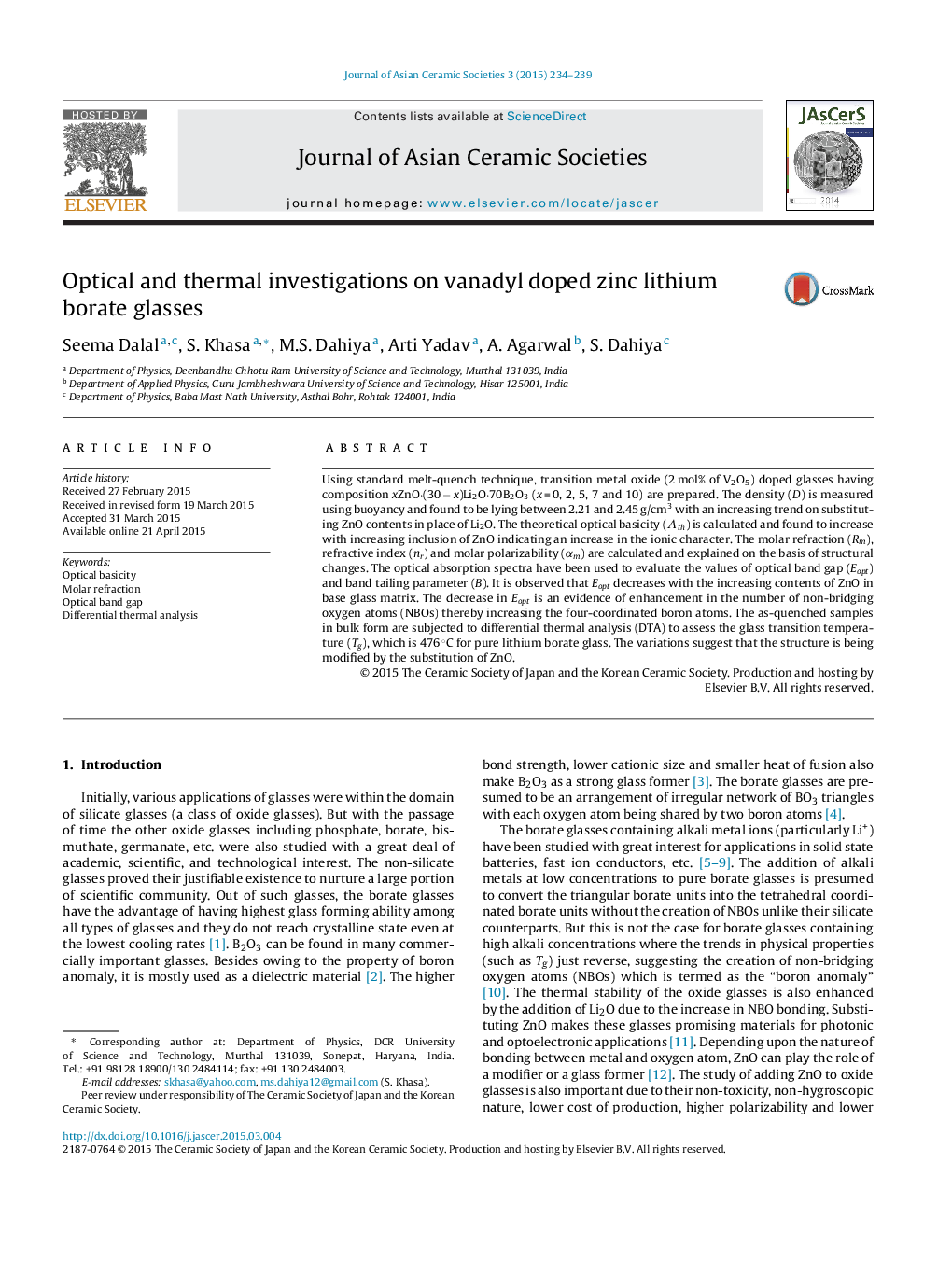| Article ID | Journal | Published Year | Pages | File Type |
|---|---|---|---|---|
| 1473260 | Journal of Asian Ceramic Societies | 2015 | 6 Pages |
•Vanadyl doped zinc lithium borate glasses have been prepared successfully.•Octahedral nature of V4+O6 is enhanced by increasing ZnO concentration.•Band gap is evaluated for valid Motts transitions.•ZnO is acting as both glass former and modifier.
Using standard melt-quench technique, transition metal oxide (2 mol% of V2O5) doped glasses having composition xZnO·(30 − x)Li2O·70B2O3 (x = 0, 2, 5, 7 and 10) are prepared. The density (D) is measured using buoyancy and found to be lying between 2.21 and 2.45 g/cm3 with an increasing trend on substituting ZnO contents in place of Li2O. The theoretical optical basicity (Λth) is calculated and found to increase with increasing inclusion of ZnO indicating an increase in the ionic character. The molar refraction (Rm), refractive index (nr) and molar polarizability (αm) are calculated and explained on the basis of structural changes. The optical absorption spectra have been used to evaluate the values of optical band gap (Eopt) and band tailing parameter (B). It is observed that Eopt decreases with the increasing contents of ZnO in base glass matrix. The decrease in Eopt is an evidence of enhancement in the number of non-bridging oxygen atoms (NBOs) thereby increasing the four-coordinated boron atoms. The as-quenched samples in bulk form are subjected to differential thermal analysis (DTA) to assess the glass transition temperature (Tg), which is 476 °C for pure lithium borate glass. The variations suggest that the structure is being modified by the substitution of ZnO.
